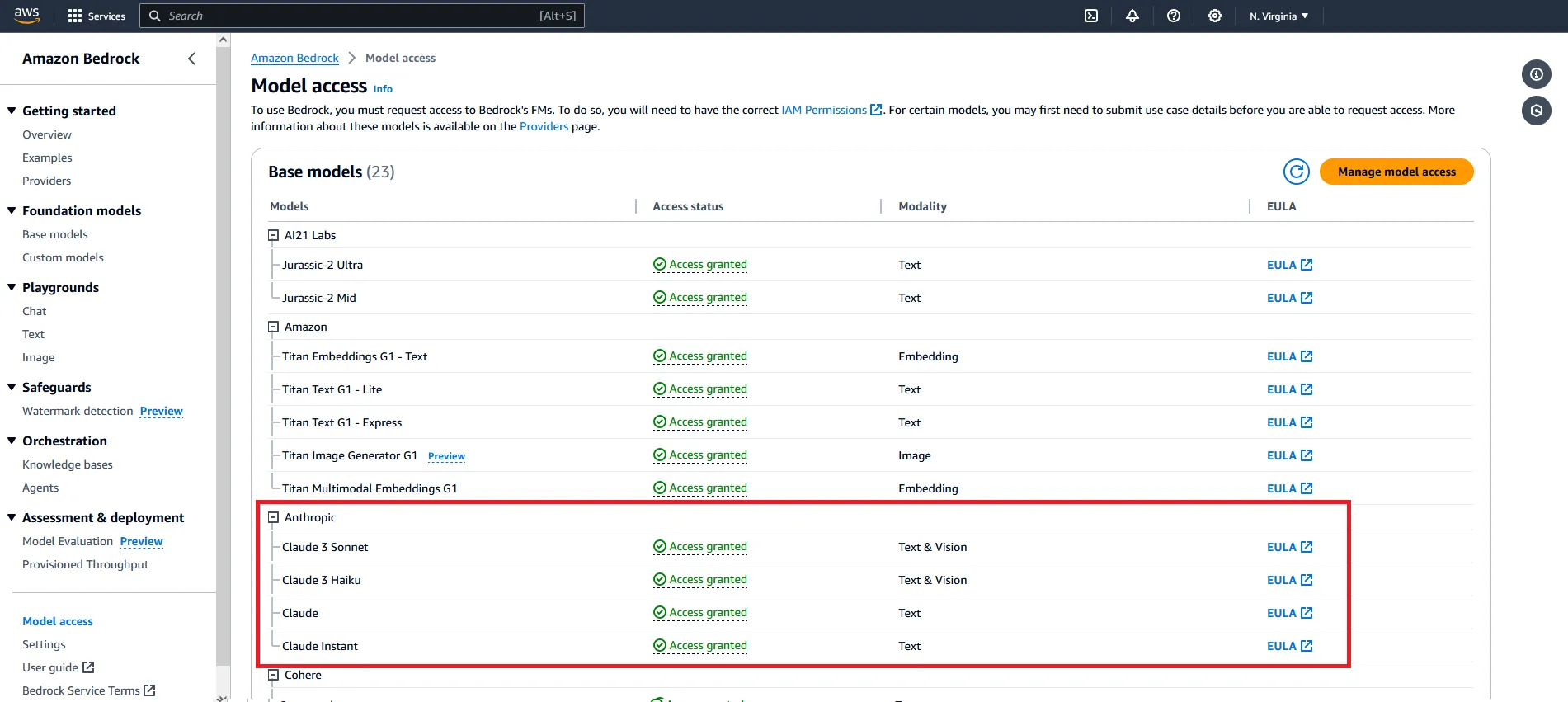Bug hunting with Amazon Bedrock and SWE-Agent 👨💻
Use Amazon Bedrock with SWE-Agent to create your own software engineering agent that can fix real-life bugs and issues in GitHub repositories.
0.3.0 release you can now run SWE-Agent using Amazon Bedrock ⛰️🎉❗ As of May 2024, Amazon Bedrock support in SWE-Agent only covers Anthropic Claude models.

💡 Please refer to the Amazon Bedrock User Guide (Set up > Model access) for more information on how to request model access.

🔒 For security reasons, SWE-Agent will not look inside thekeys.cfgfile for AWS credentials.
1
2
3
export AWS_ACCESS_KEY_ID=...
export AWS_SECRET_ACCESS_KEY=...
export AWS_SESSION_TOKEN=...1
docker pull sweagent/swe-agent:latest☝️ Use the--temperatureand--top_poptions to have more control over the model output.
1
2
3
4
5
6
7
8
9
10
11
12
13
14
15
# ❗ As of May 2024, Bedrock support only covers Claude models
MODEL_ID=anthropic.claude-3-sonnet-20240229-v1:0
# What we want to fix
GITHUB_ISSUE=https://github.com/pvlib/pvlib-python/issues/1603
# Start SWE-Agent
docker run --rm -it -v /var/run/docker.sock:/var/run/docker.sock \
$(env | grep AWS_ | xargs printf ' -e %s') \
sweagent/swe-agent-run:latest \
python run.py --image_name=sweagent/swe-agent:latest \
--model_name bedrock:$MODEL_ID \
--data_path $GITHUB_ISSUE \
--config_file config/default_from_url.yaml \
--skip_existing=False
Depending on the model selected and the inference parameters, SWE-Agent can even create a patch file that you can apply directly to a local repository:

Any opinions in this post are those of the individual author and may not reflect the opinions of AWS.
